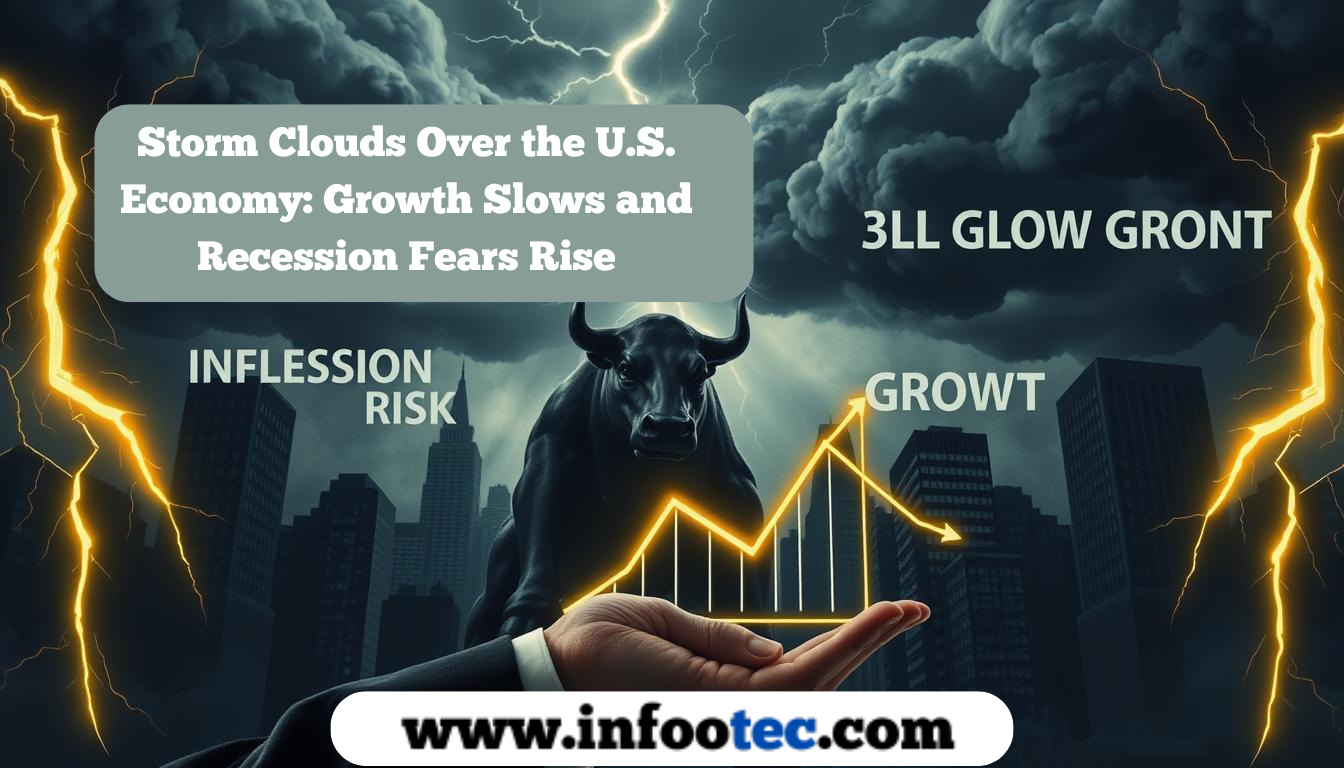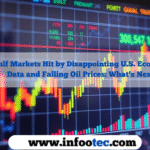Storm Clouds Over the U.S. Economy: Growth Slows and Recession Fears Rise
As we move deeper into 2025, the U.S. economy is facing mounting challenges that are stirring growing concern among economists, investors, and business leaders. The latest projections from the International Monetary Fund (IMF) paint a sobering picture: growth is expected to fall to just 1.8% this year, a steep drop from the 2.8% expansion recorded in 2024. With global tensions simmering and trade tariffs casting a long shadow, many now fear that the world’s largest economy may be inching closer to a recession.
A New Reality for U.S. Growth

The revised forecast from the IMF didn’t come as a total surprise, but it confirmed what many had feared — that the U.S. economy is slowing down more quickly than expected. The organization cites persistent trade tensions and the lingering effects of protectionist policies introduced by the Trump administration as key drivers of this downturn. Notably, the tariffs aimed at curbing imports from China and other trade partners have not delivered the intended boost to domestic industries. Instead, they’ve added friction to supply chains and increased costs for American businesses and consumers alike.
“The era of easy growth is clearly behind us,” said IMF Chief Economist Gita Gopinath during a press briefing this week. “We are witnessing the cumulative impact of trade barriers and geopolitical uncertainty.”
A 45% Chance of Recession — and Rising
Adding fuel to the fire, economists at Citigroup now estimate a 45% chance of the U.S. entering a recession within the next year. Their concerns are not unfounded. The combination of rising costs, slowing consumer demand, and global economic fragmentation is creating the kind of environment that typically precedes an economic contraction.
What’s particularly troubling is the breadth of the slowdown. Manufacturing has already entered a soft patch, with factory orders stagnating and industrial output falling for the third consecutive month. Retail sales, while still positive, are growing at their slowest pace since early 2021. And consumer confidence, which had held up surprisingly well through much of 2024, is starting to erode as fears about inflation and job stability take hold.
In its recent research note, Citigroup highlighted a troubling trend: “While the labor market remains relatively tight, the quality of job creation is declining. There are fewer high-wage roles being added, and a growing number of Americans are taking on second jobs to maintain their standard of living.”
Corporate America’s Gloomy Outlook
Perhaps the most telling sign of all comes from corporate boardrooms. According to a wide-ranging analysis of recent earnings calls, CEO sentiment is now at its lowest level since the 2008 financial crisis. Executives are sounding increasingly cautious about future investments, hiring plans, and revenue growth. Many have openly acknowledged that they’re preparing for leaner times ahead.
“We’re seeing a lot more conservatism in our clients’ behavior,” said the CEO of a major logistics firm during a Q1 earnings call. “They’re tightening budgets, pushing back on new orders, and delaying capital expenditures. That tells us they’re bracing for something — and not something good.”
This wave of caution is echoed across sectors, from tech giants trimming headcount and real estate developers pausing projects, to consumer goods companies scaling back marketing spend. The message is clear: uncertainty is the new normal.
The Fed in a Difficult Spot
All of this places the Federal Reserve in an unenviable position. With inflation pressures still lingering — particularly in housing and food prices — the Fed has limited room to maneuver. Any aggressive rate cuts could risk reigniting inflation. On the other hand, maintaining higher rates may further dampen growth and push the economy closer to recession territory.
Complicating matters is the political pressure being applied by President Trump, who has publicly called for a rate cut and hinted that inaction by the Fed could be “a betrayal of the American worker.” While Fed Chair Jerome Powell has so far resisted these calls, maintaining the institution’s independence, such pressure adds another layer of uncertainty to already volatile markets.
Consumers Feeling the Squeeze
On the ground, everyday Americans are already feeling the strain. Grocery prices continue to rise, particularly for staples like bread, dairy, and fresh produce. Energy costs have stabilized somewhat since their peak last year, but utility bills remain high in many parts of the country. Rent increases have slowed but not stopped, and homeownership remains out of reach for a growing number of young professionals.
A recent survey conducted by the University of Michigan found that nearly 60% of respondents feel “less financially secure” than they did a year ago — the highest reading since 2020. That growing insecurity is now starting to feed into consumer behavior, with more households opting to delay big-ticket purchases, cancel vacations, and dip into savings.
Global Implications and Investor Anxiety
The U.S. slowdown also has broader implications for the global economy. As one of the primary engines of world growth, any weakness in American consumer demand and investment tends to ripple outwards. Emerging markets that depend on U.S. exports or remittances are already adjusting their own growth expectations downward.
For investors, the mood is increasingly anxious. Wall Street rebounded briefly this week on hopes of a diplomatic breakthrough in trade negotiations with China, but most analysts view this as a temporary reprieve. Volatility is back in full force, and safe-haven assets like gold and Treasury bonds are once again seeing strong inflows.
“We’re telling our clients to be cautious and keep liquidity high,” said a senior strategist at a New York-based asset management firm. “There’s too much we don’t know right now — from central bank actions to geopolitical flare-ups. The best defense in a market like this is flexibility.”
Looking Ahead: A Time for Realism and Resilience
As we look ahead to the rest of 2025, the U.S. economy appears to be at a critical juncture. While a full-blown recession is not yet certain, the risks are clearly rising — and the margin for error is shrinking.
What’s needed now is a combination of strategic policy adjustments, investor patience, and consumer resilience. The economy may be slowing, but it’s far from broken. If anything, this period of adjustment could serve as a necessary recalibration after years of stimulus-fueled growth and pandemic-era distortions.
In the words of one economist: “We’re not witnessing the collapse of the U.S. economy — we’re watching it find a new balance. And that takes time, discipline, and a steady hand.”



